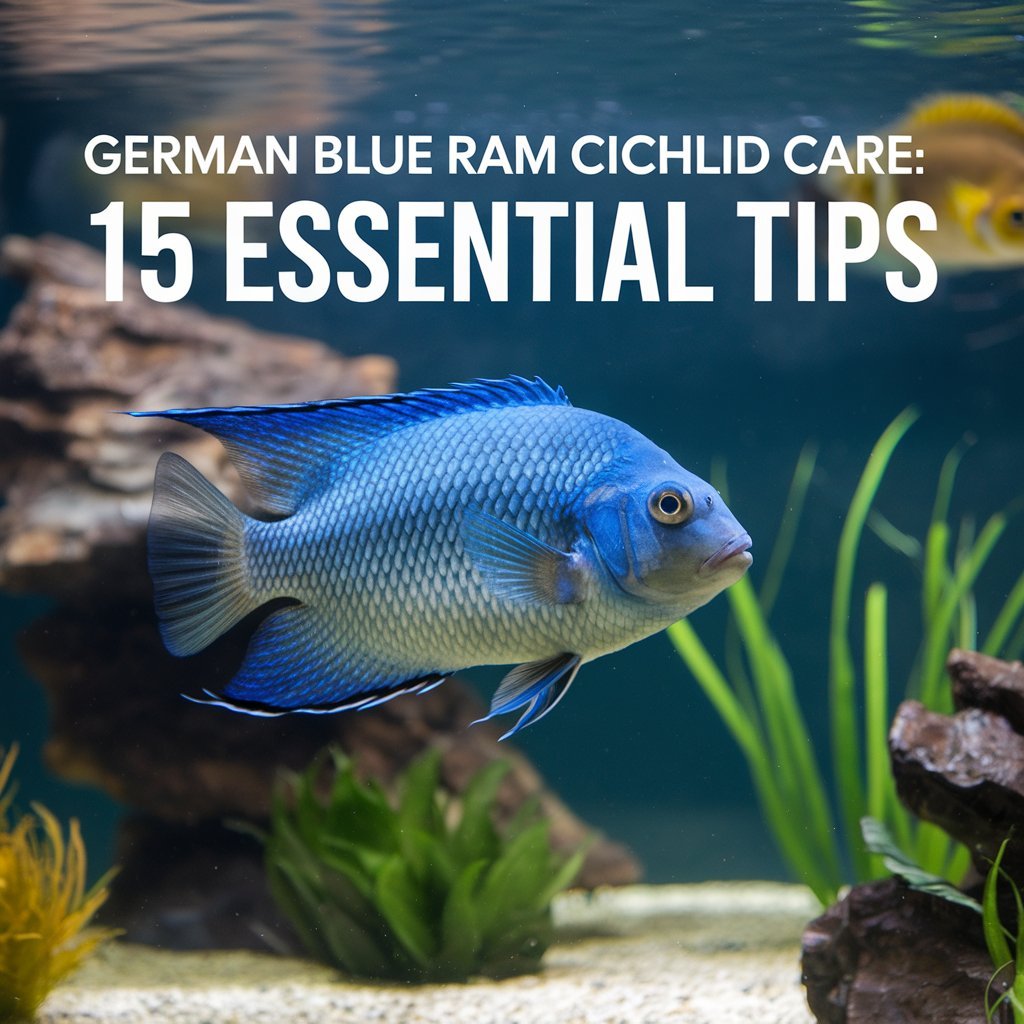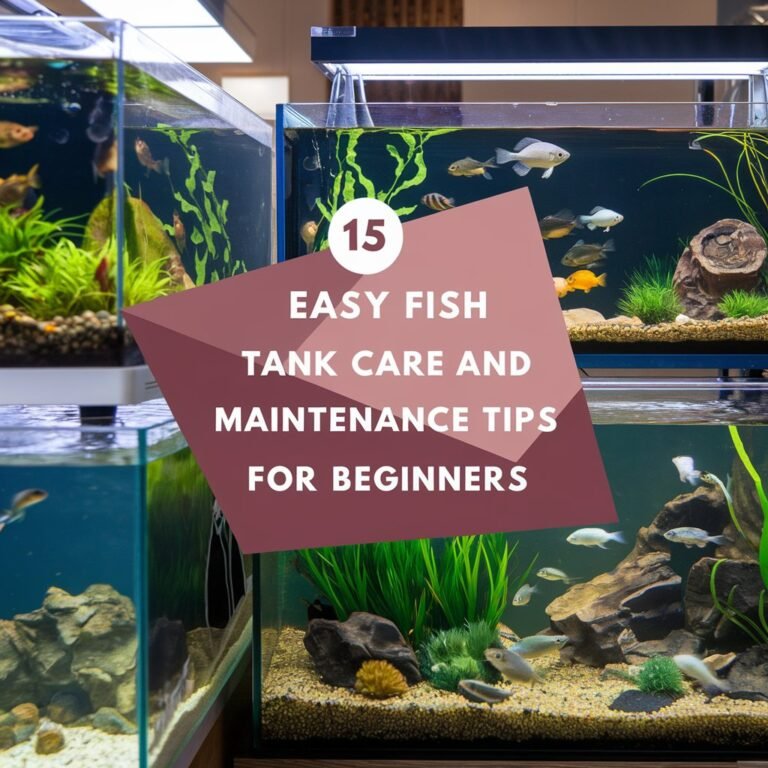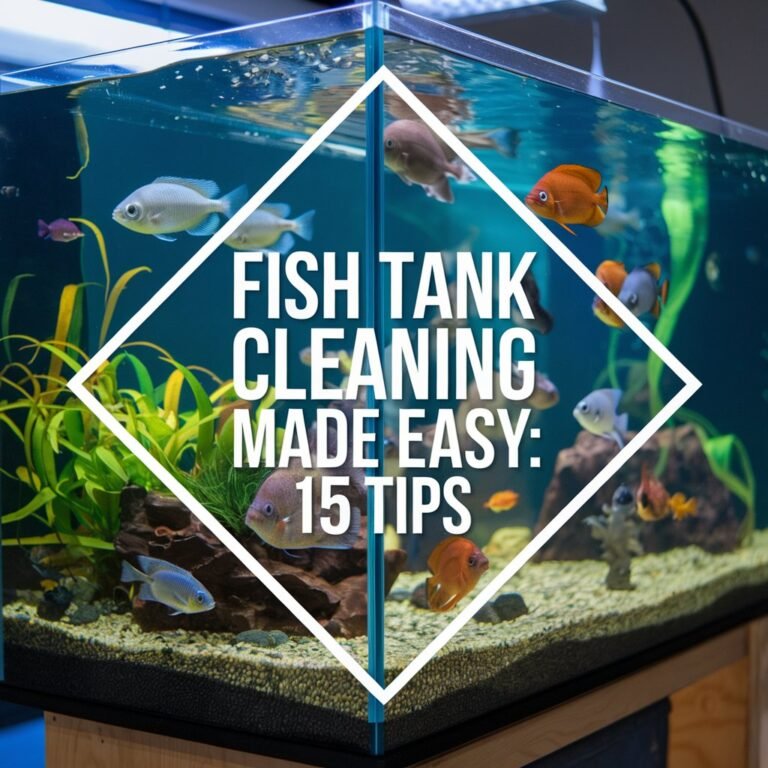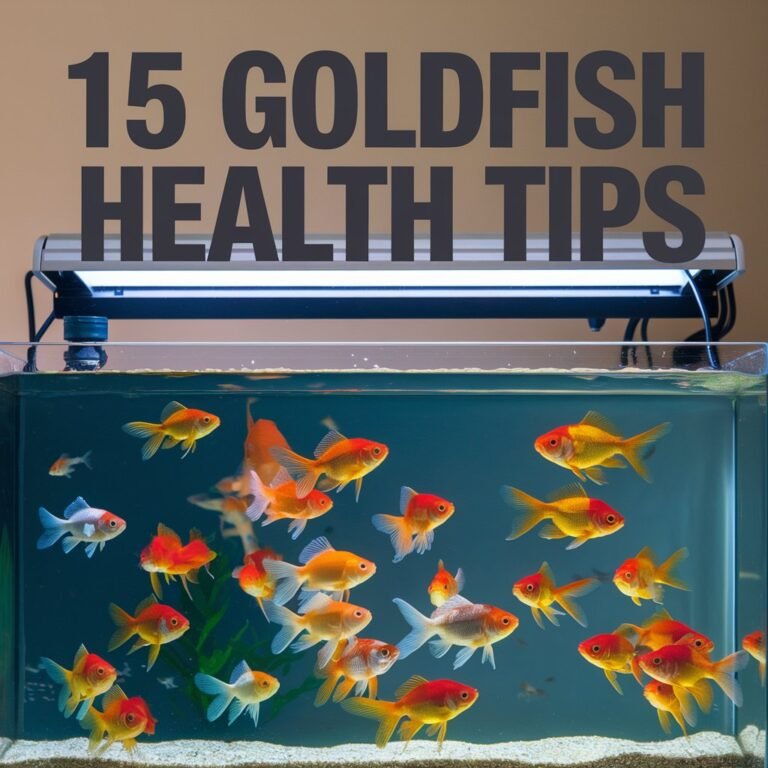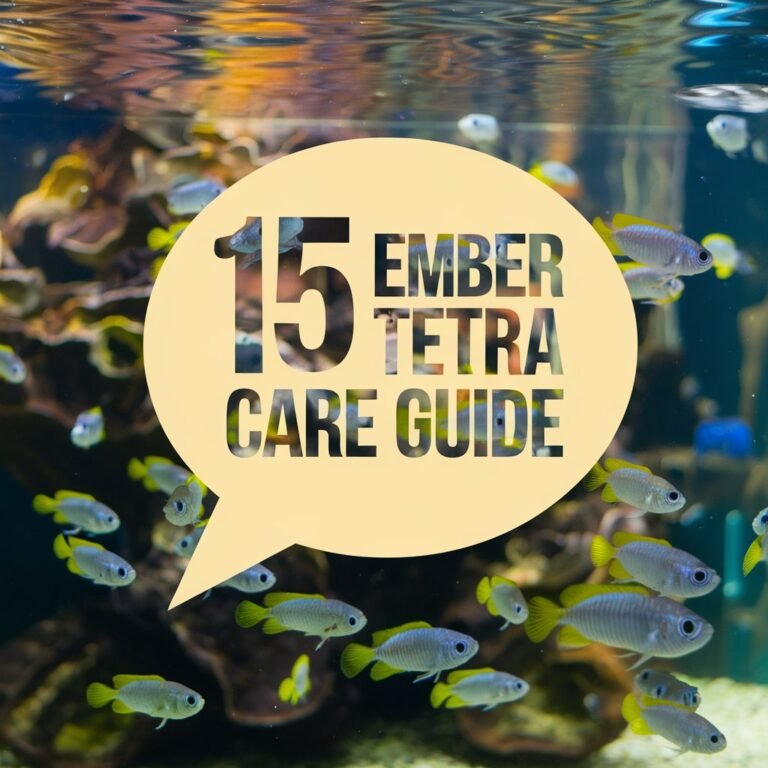German Blue Ram Cichlid Care: 15 Essential Tips
If you’re considering bringing a German Blue Ram Cichlid into your home, you’re likely aware of their stunning appearance and intriguing behavior. However, these beautiful fish require more than just a pretty tank to thrive.
With specific needs and sensitivities, it’s vital you’re prepared to provide the right environment and care. From tank size and setup to diet and water quality, there are many factors to ponder. By understanding the unique needs of German Blue Ram Cichlids, you can help guarantee their health and happiness – but where do you start, and what are the most pivotal factors to get right?
In A Nutshell
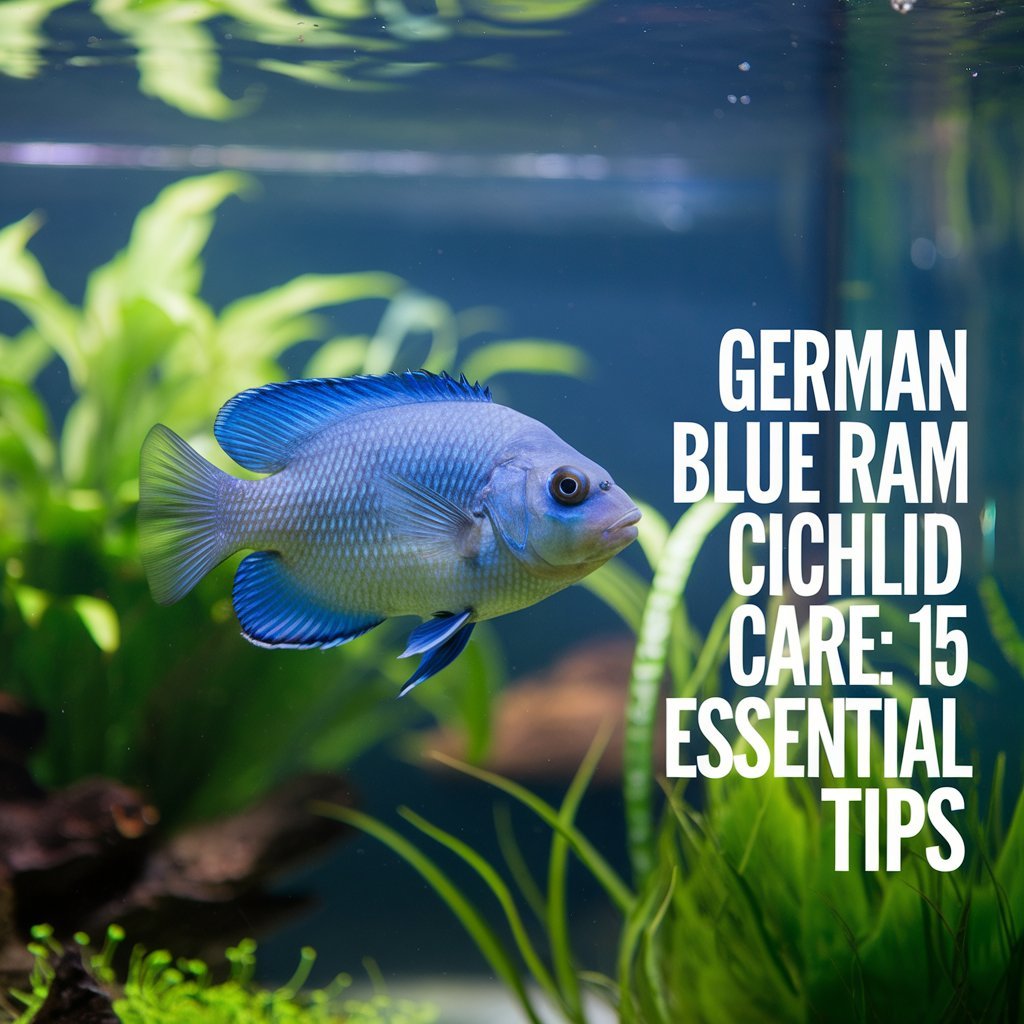
- Provide a minimum 20-gallon tank with a secure lid, as German Blue Rams are skilled jumpers.
- Maintain water parameters: pH 6.5-7.5, temperature 78-82°F, and water hardness 5-10 dGH.
- Offer a balanced diet with high-quality commercial pellets, live or frozen foods, and plant-based supplements.
- Create a peaceful environment with plenty of hiding places, plants, rocks, and driftwood to reduce stress.
- Perform regular water changes (10-15% weekly) and monitor water quality to prevent digestive issues and disease.
Choosing the Right Tank Size
When setting up a tank for your German Blue Ram Cichlid, choosing the right tank size is crucial.
A minimum tank size of 20 gallons is recommended, but a larger tank is always better. This is because German Blue Rams are active swimmers and need plenty of space to move around.
They also produce a significant amount of waste, so a larger tank will help to dilute this waste and keep the water clean.
When selecting a tank, consider the shape as well as the size.
A longer, wider tank is better than a tall, narrow one, as this will provide your German Blue Ram with more swimming space.
Avoid tanks with sharp corners or other features that could harm your fish.
In terms of Aquascape design, a well-planned layout can help to create a sense of security and reduce stress for your German Blue Ram.
Consider using plants, rocks, and other decorations to create hiding places and visual barriers.
A good Aquascape design will also help to create water circulation and prevent dead spots in the tank.
Setting Up the Tank Environment
Having chosen a suitable tank for your German Blue Ram Cichlid, now is the time to focus on creating an environment that mimics their natural habitat.
Start by selecting a suitable gravel that’s gentle on your fish’s fins and won’t cause them any harm. A fine to medium-grained gravel or sand is ideal, as it allows for easy digging and won’t cause any injuries.
Avoid using sharp or coarse gravel, as it can cause damage to your fish’s fins and scales.
Next, focus on creating plenty of hiding places and visual barriers. German Blue Ram Cichlids are naturally skittish and need plenty of places to hide and feel secure.
Add some plants, rocks, or driftwood to create a natural environment that mimics their wild habitat.
Once you’ve set up your tank, crucially, go through the cycling process. This process involves establishing a healthy colony of beneficial bacteria that will help to break down waste and keep your tank clean.
Allow your tank to cycle for at least 4-6 weeks before introducing your German Blue Ram Cichlid.
Water Parameters and Quality
Managing water parameters and quality is crucial for keeping your German Blue Ram Cichlid healthy.
You’ll need to monitor water temperature, hardness, and chemical levels to guarantee they’re within the ideal range for your fish. Invest in a good water testing kit to check for ammonia, nitrite, and nitrate levels. These kits usually include test strips or liquid tests that provide accurate readings.
Regular water changes are essential to maintain water quality.
You should change 10-15% of the tank water weekly to prevent the buildup of toxins. When changing the water, use a gravel vacuum to remove debris and waste from the substrate. Make sure to match the new water’s temperature and chemical levels to the existing tank water to avoid shocking your fish.
When setting up a new tank, consider using a fishless cycling method to establish a healthy biological balance.
This method involves adding ammonia to the tank to feed the beneficial bacteria, which then break down the ammonia into nitrite and nitrate. By doing this, you’ll create a stable environment for your German Blue Ram Cichlid to thrive in.
Maintaining Proper Ph Levels
Maintaining proper pH levels is crucial for the health and well-being of your German Blue Ram Cichlid, as these fish are sensitive to extreme pH fluctuations.
German Blue Rams prefer slightly acidic to neutral water pH, ranging from 6.5 to 7.5. You can use pH testing methods such as pH test kits or pH meters to monitor the pH levels in your aquarium.
Regular pH testing will help you identify any pH fluctuations and take corrective action promptly.
pH fluctuation effects can be detrimental to your German Blue Ram Cichlid’s health.
Sudden changes in pH can cause stress, leading to weakened immunity, and increased susceptibility to diseases. Chronic pH fluctuations can also lead to long-term health issues, such as fin erosion, labored breathing, and reduced appetite.
To maintain stable pH levels, you can use pH buffers or perform regular water changes with dechlorinated water. Additionally, avoiding overfeeding and maintaining a balanced biological load will help prevent pH fluctuations.
Ideal Water Temperature Ranges
Monitoring pH levels effectively sets the stage for a healthy environment, and now it’s time to focus on another key factor in your German Blue Ram Cichlid’s care: ideal water temperature ranges.
German Blue Rams thrive in temperatures between 78°F and 82°F (25°C and 28°C), with a slight tolerance for temperature fluctuations. However, it’s imperative to maintain a stable temperature, as sudden changes can cause stress and illness.
Avoid placing your aquarium near drafty windows, air conditioning vents, or direct sunlight, as these can create temperature gradients that may harm your fish.
Thermal fluctuations can also occur due to equipment failure or inadequate insulation. To prevent this, invest in a reliable heater and thermometer, and verify that your aquarium is well-insulated.
Maintaining a consistent temperature is paramount for your German Blue Ram’s health and well-being.
Regularly check your aquarium’s temperature to confirm it’s within the ideal range. If you notice any significant changes, take corrective action promptly to prevent stress and disease.
German Blue Ram Diet Requirements
Providing a nutrient-rich diet is pivotal to keep your German Blue Ram healthy and thriving.
As an omnivorous species, they require a balanced mix of protein sources and plant-based foods. You can offer high-quality commercial pellets or flakes as the main staple of their diet.
However, it’s imperative to supplement their diet with a variety of live or frozen foods, such as brine shrimp, bloodworms, and daphnia. These protein sources will help promote healthy growth and coloration.
In addition to protein sources, you can also provide your German Blue Ram with food supplements, such as spirulina or vegetable-based flakes.
These supplements can help provide necessary vitamins and minerals that may be lacking in their diet. However, it’s pivotal to use these supplements sparingly, as over-supplementation can lead to water quality issues.
A balanced and varied diet will help guarantee your German Blue Ram remains healthy and thriving. By providing a mix of high-quality commercial foods and live or frozen supplements, you can create a nutrient-rich diet that meets their unique needs.
Regularly rotating their food will also help prevent boredom and stimulate their appetite.
Feeding Frequency and Portion
With a well-rounded diet in place, you can focus on fine-tuning your German Blue Ram’s feeding schedule to meet their unique needs.
When it comes to meal timing, it is vital to establish a routine that promotes healthy digestion. German Blue Rams are naturally crepuscular, meaning they’re most active at dawn and dusk.
You can take advantage of this natural rhythm by feeding them during these times, dividing their daily ration into 2-3 meals.
Food variety also plays a pivotal role in maintaining your German Blue Ram’s peak health.
Rotate their diet to guarantee they receive a broad spectrum of nutrients, including a mix of protein-rich foods like brine shrimp and bloodworms.
Supplement these with vegetable-based foods like spirulina or algae wafers.
To determine the correct portion size, consider your German Blue Ram’s age, size, and activity level.
A general rule of thumb is to provide 1-2% of their body weight in food per day.
For example, a 2-inch German Blue Ram would require about 0.02-0.04 grams of food per meal.
Monitor your fish’s weight and adjust their portion size accordingly to prevent overfeeding or underfeeding.
Tankmate Selection Guide
Choosing compatible tankmates is crucial when keeping German Blue Rams. You’ll want to focus on finding peaceful, small schooling fish that complement your ram’s social compatibility.
A harmonious community can be achieved by introducing species that occupy different swimming levels. For the middle and upper water column, consider adding small characins like Lemon or Pygmy Tetras, or peaceful Rasboras.
These fish are active swimmers and can help distract your ram from potential aggression.
When selecting bottom-dwellers, opt for small catfish or loaches that aren’t fin-nippers. Corydoras catfish are a great choice, as they’re gentle and excellent for community tanks.
You can also include Amano or Cherry shrimp, which are great for cleaning up food debris. Avoid mixing your ram with fin-nipping or slow-swimming fish, as they may become stressed or harassed.
Avoiding Aggressive Tankmates
Avoiding aggressive tankmates is essential when keeping German Blue Rams, as these cichlids can be sensitive to stress and harassment.
You’ll want to steer clear of Ram rivals that can outcompete or intimidate your German Blue Rams. Some species to avoid include other cichlids, particularly those from the same genus, as they may exhibit territorial behavior or compete for food and resources.
Fin nippers are another type of tankmate to avoid, as they can cause significant stress and injury to your German Blue Rams.
Species like tiger barbs, fin-clipping tetras, and certain types of catfish are notorious for their fin-nipping behavior and should be avoided. You’ll also want to avoid tankmates that are too large or too small, as they may see your German Blue Rams as food or be intimidated by them.
When selecting tankmates, choose peaceful, community-oriented species that are similar in size and temperament to your German Blue Rams.
Research each species’ behavior, size, and requirements to guarantee compatibility and a harmonious community. By avoiding aggressive tankmates, you can create a stress-free environment for your German Blue Rams to thrive.
Creating Hiding Places
Hiding places play a vital role in your German Blue Rams‘ tank setup. These cichlids are naturally skittish and require plenty of places to hide and feel secure.
You can create these hiding places using various decorations, such as rock caves and driftwood dens. Rock caves can be formed by stacking rocks or using commercial cave structures. Driftwood dens can be created by placing driftwood pieces in a way that forms a small enclosure.
When creating hiding places, consider the size and shape of your German Blue Rams. They should be able to swim in and out of the hiding places easily.
Also, make certain that the hiding places aren’t too small, as this can cause stress to your fish. Aim for a minimum of 3-4 hiding places per 10 gallons of water. This will provide your German Blue Rams with plenty of options to choose from and reduce competition for hiding places.
Providing Plants and Decorations
With live plants and decorations, you’re not only adding visual appeal to your German Blue Ram’s tank but also creating a natural environment that can help reduce stress and promote healthy behavior.
By incorporating plants, you’ll be enhancing the tank’s water quality through photosynthesis, which can help to regulate water parameters and create a more stable environment.
When choosing plants, select species that are suitable for your tank’s water conditions and are compatible with the German Blue Ram’s needs.
Java moss, Anubias, and Amazon swords are good options, as they’re easy to care for and can thrive in a well-maintained tank.
Consider creating an aquatic landscaping design that includes a variety of plants with different textures and growth patterns to add visual interest.
In addition to plants, you can use decorative accents such as driftwood, rocks, and ceramic ornaments to create hiding places and add depth to the tank.
Avoid using sharp or rough decorations that can cause injury to your fish.
Regular Water Changes Importance
Regular water changes are crucial for maintaining ideal water quality in your German Blue Ram’s tank.
You should perform water changes to remove toxins and waste products that your fish produce. It’s recommended to change 10-15% of the tank water weekly to maintain prime water quality.
To guarantee the best results, you should test the water before making changes.
Water testing frequency depends on the age of the tank and biological stability. For a mature tank, test the water once a week. For a new tank, test the water more frequently, ideally every 2-3 days, until it’s biologically stable.
Incorporating regular water changes into your aquarium maintenance schedules will help you stay on top of water quality.
Create a schedule to perform water changes at the same time each week. This will help you maintain a consistent water quality routine and prevent sudden changes that can stress your fish.
Remember to use a gravel vacuum to remove debris and waste from the substrate during water changes to keep your tank clean and healthy.
Monitoring Water Hardness
As you maintain your German Blue Ram’s tank, you’ll want to keep a close eye on water hardness, which plays a significant role in your fish’s overall health.
German Blue Rams are native to the soft, slightly acidic waters of South America, so they’re not well-suited to hard water. Hard water effects can be detrimental to your fish, causing stress, stunted growth, and even death.
To monitor water hardness, you’ll need to perform regular water hardness tests. These tests measure the levels of calcium and magnesium ions in the water, which contribute to its hardness.
You can use a water hardness test kit, available at most pet stores, to determine the water hardness in your tank. The ideal water hardness for German Blue Rams is between 5-10 dGH (degrees of general hardness).
Identifying Common Health Issues
Maintaining ideal water conditions is just one aspect of keeping your German Blue Ram healthy.
You also need to monitor your fish for signs of common health issues. Fin rot is a bacterial infection that can cause frayed or torn fins, and it’s often a result of poor water quality or fin nipping.
Look for fin rot signs such as ragged edges, discoloration, or white spots on the fins. Fungal infections can also affect your German Blue Ram, causing cotton-like growths on the skin or fins.
These growths can be white, yellow, or brown in color.
Other common health issues in German Blue Rams include parasites, such as ich or velvet, and bacterial infections, such as dropsy.
Regularly inspect your fish for signs of illness, such as labored breathing, lethargy, or loss of appetite.
Keep an eye out for changes in color, swimming behavior, or physical appearance.
Monitoring your fish closely will help you catch any potential health issues early, increasing the chances of successful treatment.
Regular water changes, proper diet, and a clean environment can also help prevent many common health issues.
Quarantine and Treatment Procedures
When a health issue is detected in your German Blue Ram, you’ll need to isolate it immediately to prevent the disease from spreading to other fish in your tank.
This fish isolation technique is a vital step in maintaining a healthy aquarium environment. Set up a separate quarantine tank with the same water parameters as the main tank to minimize stress on the isolated fish.
Verify the quarantine tank has adequate filtration, heating, and aeration. A 10-gallon tank is a good size for quarantine purposes.
Develop a quarantine protocol that includes regular water changes, close monitoring of the fish’s condition, and administering treatment as necessary.
Use a hydrometer to monitor water parameters and make adjustments accordingly. Administer medication according to the manufacturer’s instructions, taking care not to overmedicate, which can cause more harm than good.
Keep the quarantine tank away from direct sunlight and maintain a peaceful environment to help the fish recover quickly. Regularly inspect the quarantine tank to identify any potential issues before they become major problems.
Frequently Asked Questions
Can German Blue Rams Be Kept With Neon Tetras Safely?
You can keep German Blue Rams with Neon Tetras safely if you choose them as school companions carefully. Select peaceful, small tankmates that won’t harass or compete with your Rams for food or space.
Are German Blue Rams Easy to Breed in Home Aquariums?
When you breed German Blue Rams in home aquariums, it can be moderately easy, if you correctly establish breeding triggers like warm temperatures, suitable mates, and carefully manage tank preparation for ideal water parameters and ample space.
How Often Should I Change Gravel in the Tank?
You should change gravel in your tank every 6-12 months, or as needed. For gravel cleaning frequency, vacuum 10-20% of gravel weekly. Gravel replacement methods involve replacing 10-20% of gravel every 1-2 months for ideal water quality.
Can German Blue Rams Live in Outdoor Ponds?
You can keep German Blue Rams in outdoor ponds if you maintain proper Pond filtration and stable Water temperature between 72-82°F (22-28°C), ensuring their well-being and minimizing stress in the varying outdoor environment.
Are German Blue Rams Sensitive to Aquarium Lighting?
When keeping German Blue Rams, you’ll notice they’re sensitive to aquarium lighting. Opt for moderate light intensity and a color spectrum with plenty of blues and reds, as this promotes their natural coloration and comfort.
FInal Verdict
You’ve made it to the end of the ultimate guide to caring for German Blue Ram Cichlids. By now, you know that these stunning fish require attention to detail, patience, and dedication.
You’ve learned the essentials of creating a thriving environment, maintaining ideal water conditions, and identifying potential health issues. Remember, consistent monitoring and prompt action are key to keeping your German Blue Rams happy and healthy for years to come.
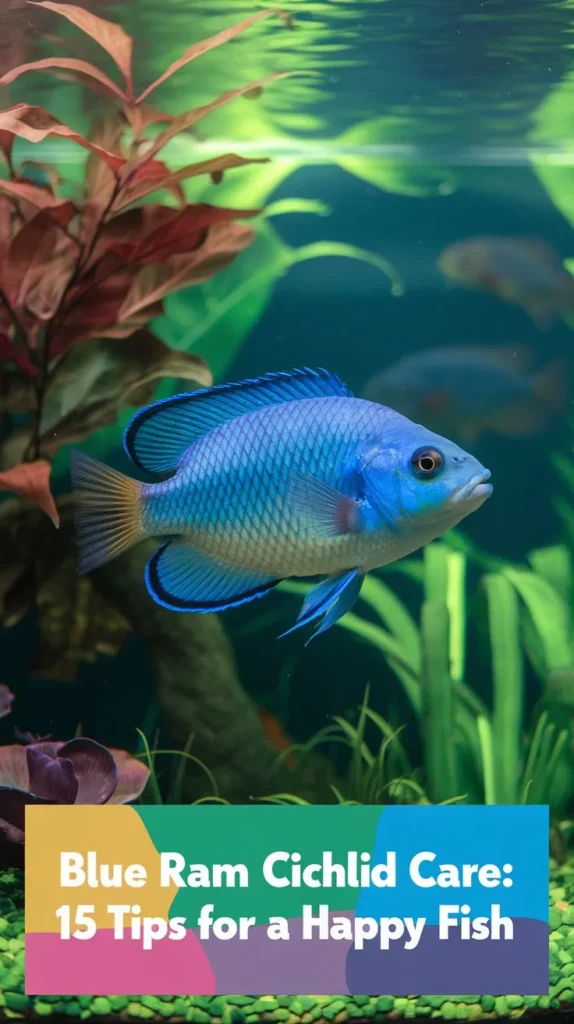
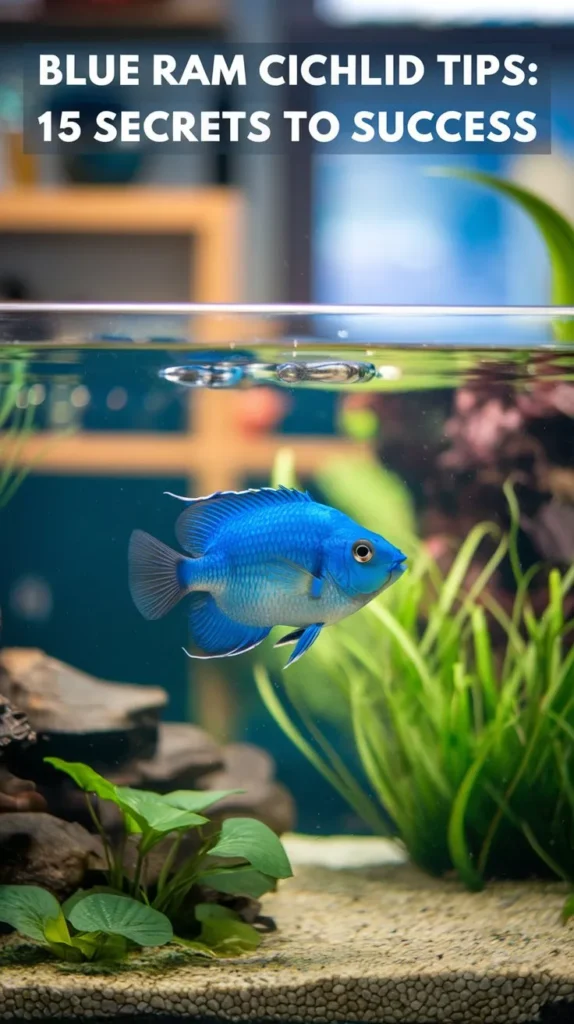
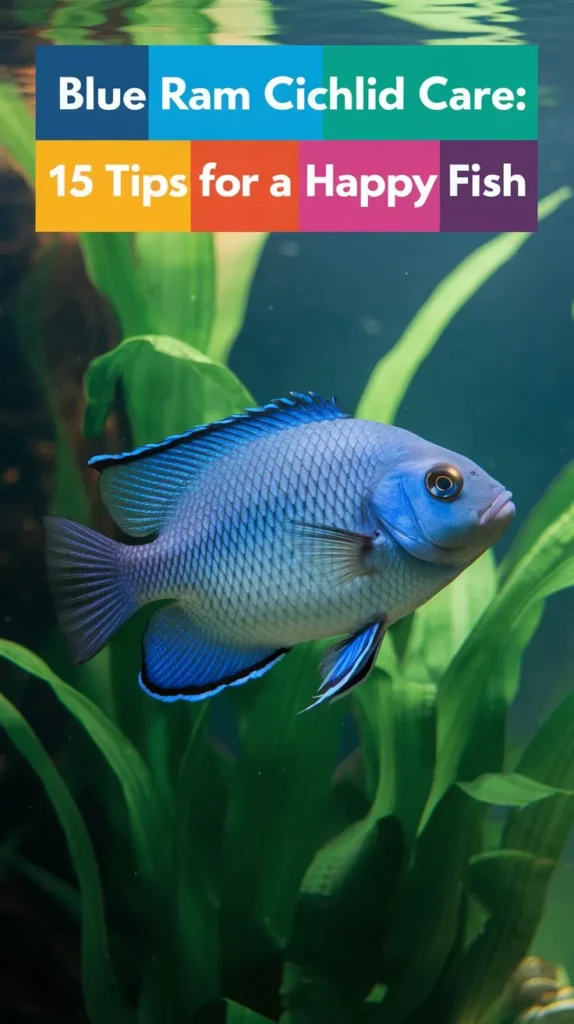
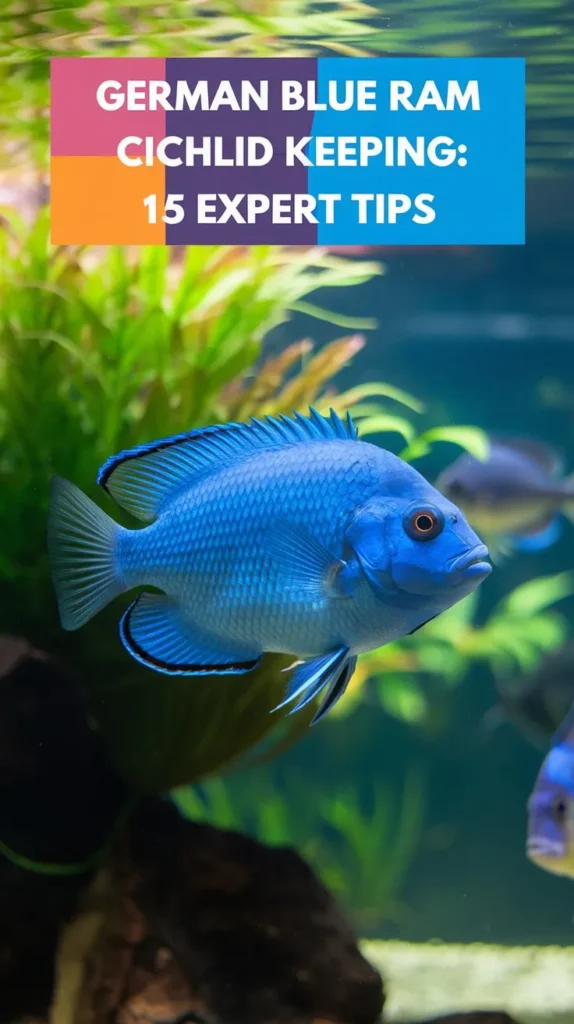

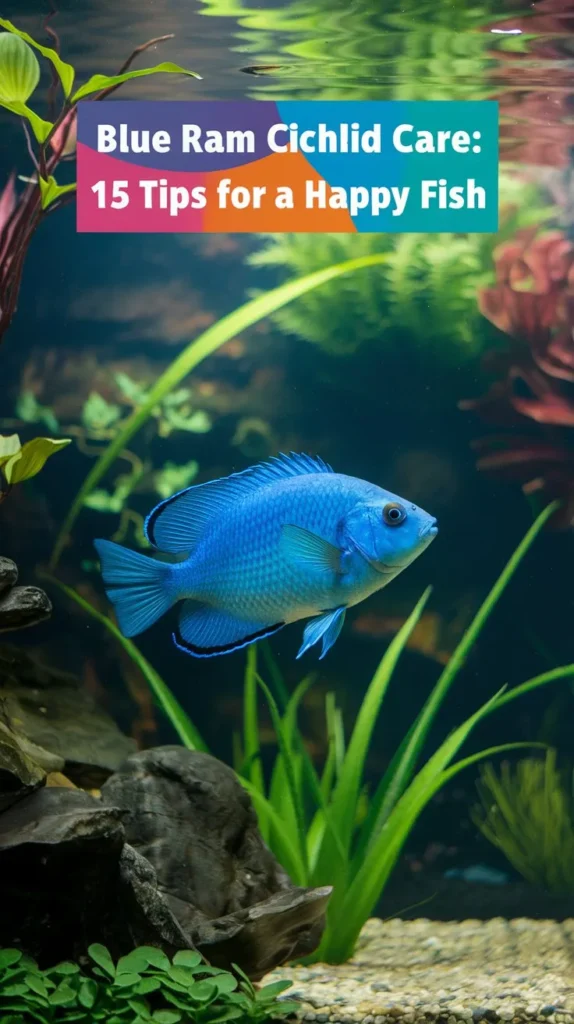

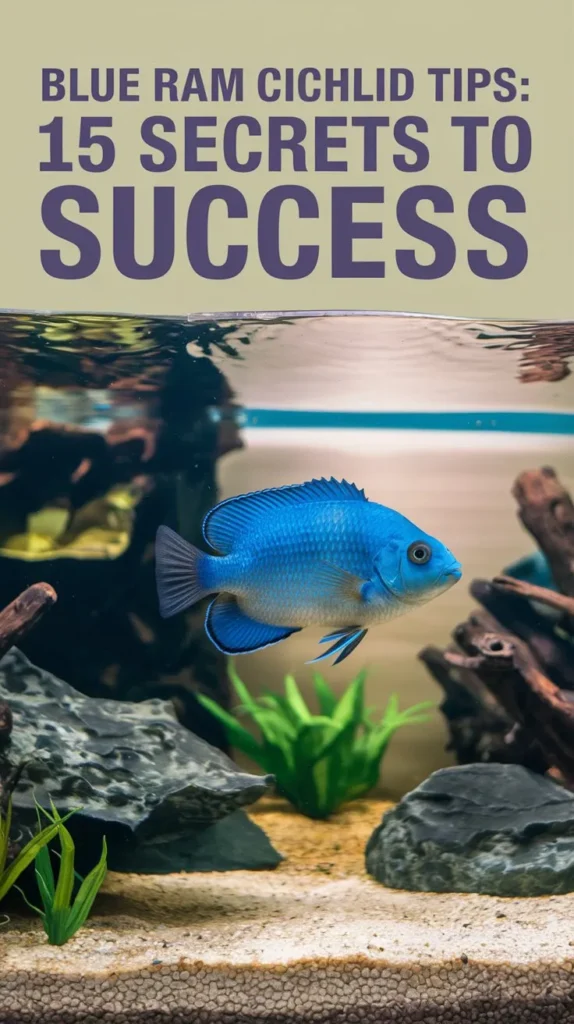

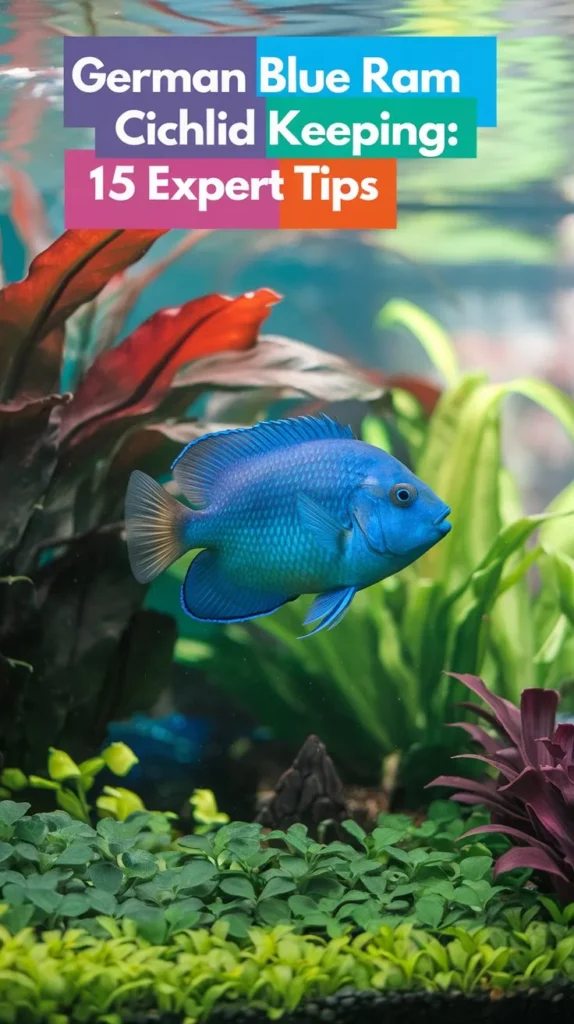
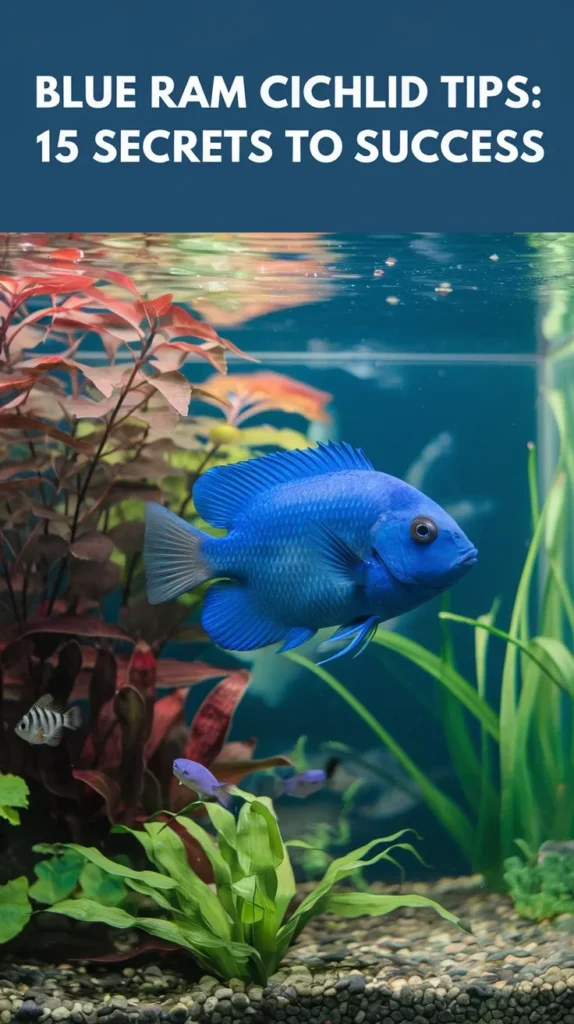

Hello, I’m Aria Cooper, the heart and soul behind Swimmy Buddies. As a devoted fish aficionado, I share my aquatic adventures and expertise to inspire your own underwater explorations. 🐠🌊

